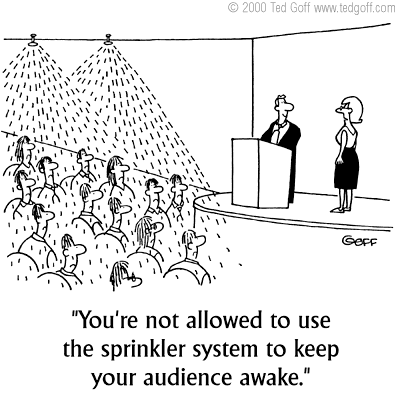
"Data is raw material! Analyzed data lead to assumptions. Assumptions can lead to mistakes. Don't assume...know! Don't settle for information, demand insight!"
I don't know who is the originator of the quote above, but it appears on almost every wall here in the form of posters, banners, wall stickers, table stands...
The first few weeks here, I did not fully appreciate the depth of this message till I came across the following video by Nick Milton of Knoco.com discussing data, information and knowledge. Even this alone may not have struck a chord but for the fact that it was a part of a blog post by Kevin D. Jones:
I Finally Get It – Why Social Networking is So Important.
A combination of the post, the video and a couple of experiences brought about my Ah ha! moment today.
Here's an excerpt from the post where Kevin J is quoting Luis Suarez:
"In fact, it’d be right to say that we already *know* way too much. KM isn’t about helping us to know more. It’s about helping us to understand. Knowledge without understanding is like, well, information."
Nick Milton says about Knowledge:
"Knowledge can come from others, it can come from your experience...it is the factor that allows you to take the right decision and do the right thing. KM is a managed system that systematically ensures people have the knowledge they need in any circumstance to make the correct decision...It is providing them with capability, with know-how."
I have been mulling over this for some time when like a jigsaw puzzle, things seemed to fall in place.
I know there is a process for transforming data to knowledge and all kinds of graphs and charts show the process. But they don't really say what knowledge is that data is NOT.

Data, and this is my understanding, is "context-less pieces/bytes of information."
Just hang on to this thought for a moment, and I will come back after a short digression.
The Anecdote:
I recently finished reading Garr Reynold's Presentation Zen. In the book, he recounts his initial encounter with the Japanese. The Japanese, as a culture, do not present their opinion immediately. When presented with any information and asked for their conclusion, their typical answer is, "It depends!" Coming from a data-driven culture, he used to find this slow and frustrating till he realized the philosophy behind it.
Analyzing a set of data out of its context can only lead to assumptions. And assumptions can be misleading. And the same set of data can take on different interpretations depending on the context. The Japanese, a wise culture, realized this long ago and made it a part of their philosophy. And this is also the root of knowledge.
An Experience:
I recently went through an experience where the same set of data led to completely different interpretations by about 6 different people.
1. Who was wrong? No one!
2. Who arrived at the truth? No one! and that includes me...
3. What was missing? None of us asked or answered the right questions. All of us focused on the four Quantitative W's of Who, When, Where, and What. We never addressed the two Qualitative W's of How and Why?
4. What was the key flaw? All of us--some 6 people in the mail trail--had the same set of data but not the same context.
For quite a few days, I have been pondering about my utter inability to communicate my need and the sheer desperation to even one person. I began to doubt my communication and e-mail writing skills. And this was agonizing me more than the incident...my absolute failure to communicate with even one person out of the six...
Then, just at the spot you can see below, while I stared into space, it all just came together. No one had the context. Everyone had only the data. And this knowledge without the understanding, is well, information. I wanted to jump up shouting Eureka! At least, I know my English was not so flawed that no one understood...

Everyone on the mail trail must have forgotten the whole incident by now but I like to arrive at the root of my emotions and reactions...
My Key Learning:
Address the How and Why and make sure the context is clear. Never assume! Look for insights. I put this up on my Skype handle to drive home to myself the lesson I have learnt...
This applies to all life situations--personal or professional. Half our problems begin because we jump to conclusions...we don't stop to ask, "Why".
Why did you do this, say this, write this...?
How do we make sense of data?
This brings me back to the original thought of Data vs. Knowledge management. In daily life, discussions help. This is, as Kevin Jones says, the primary reason for the existence of social platforms. The people help us--through shared experiences, inputs, insights--to make sense of the endless stream of information bombarding us each second, every day.















